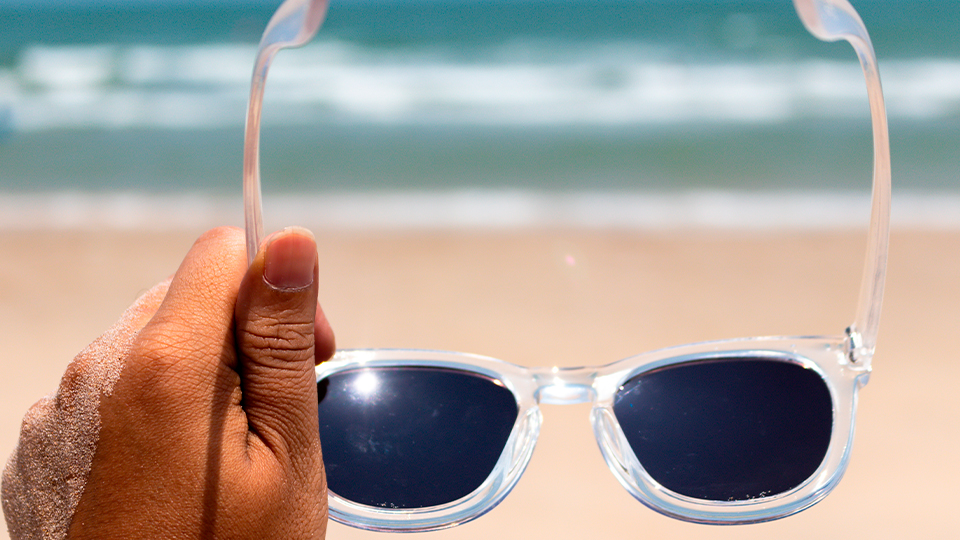Refraction or prescription
31/03/2025

03/06/2020
Many think that the color of the lenses in sunglasses is something uniquely aesthetic, but nothing is further from reality. The color of the glass we choose will cause the absorption of a part of the spectrum of visible light to vary and therefore the perception of the landscape tone. Therefore, each of the different colors will be better adapted to a certain type of activity. These are the parameters that must be taken into account to choose our sunglasses.
1. The color of the glass
Leaving personal preferences aside, the glass filter has some characteristics that make it recommended for certain environments:
2. UV filter
The most important feature of sunglasses is the filter for ultraviolet radiation. It is responsible for protecting us from the harmful effects of the sun, which, as occurs on the skin, also affects our eyes.
Depending on the wavelength, radiation is more or less harmful. Visible light is the light that the eye is capable of capturing and ranges from 400 to 800 nanometers. Radiation becomes dangerous when it is less than 400 nanometers (where we enter the ultraviolet spectrum). The glasses must ensure a radiation barrier below this figure, normally represented by the UV 400 logo. By law, all sunglasses should meet this requirement, hence the importance of the homologation when choosing the most appropriate glasses.
The ultraviolet filter has nothing to do with the color of the glass or with the glass being more or less dark. In fact, a transparent glass can have an ultraviolet filter that protects us from the harmful effects of the sun. What the dark glasses do is decrease the percentage of visible light that reaches our eyes, making it convenient to carry out a certain activity depending on the environmental conditions in which we find ourselves.
3. Visible light filter
Sunglasses are rated from 0 to 4 based on the filtering capacity of visible light, which is not the same as the filtering capacity of ultraviolet radiation, which is harmful to the eye, as has been explained above. The visible light filter determines whether the lens is comfortable or suitable for the environmental conditions in which it is used.
Depending on the absorption capacity of visible light, we have, according to ISO 8980-3, lenses in five categories:
Doctor Andrés Picó, ophthalmologist at the Barraquer Ophthalmology Center.
En verano solemos exponer nuestros ojos a una gran cantidad de riesgos como los rayos nocivos del sol, el contacto con el agua y la práctica de algunos deportes que requieren una protección ocular adecuada. El doctor Andrés Picó te ofrece las pautas para disfrutar de las vacaciones con garantías para tus ojos.